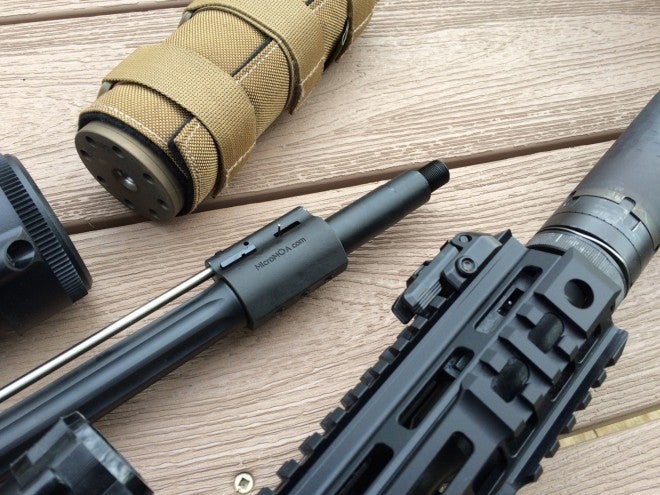Suppressing a 5.56mm AR-15 isn’t always as straight forward as mounting a silencer and enjoying reduced noise and muzzle blast. Unlike bolt action rifles, suppressing a semi automatic (our even full auto) rifle can have unwanted side effects. Extra gas pushed back into the system by the suppressor can increase cyclic rates, cause malfunctions, add dirt and residue to the action and blow escaping gasses into the shooters face. Fortunately, there are several ways to control gases in an AR, one of which is replacing your existing gas block with an an adjustable gas block like the MicroMOA Govnah.
Background
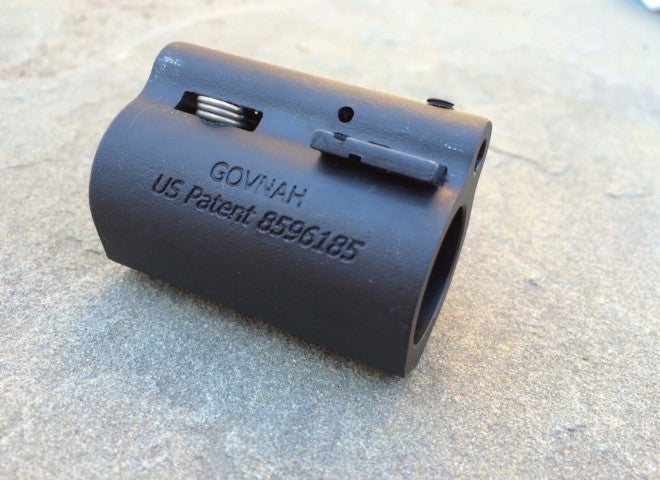
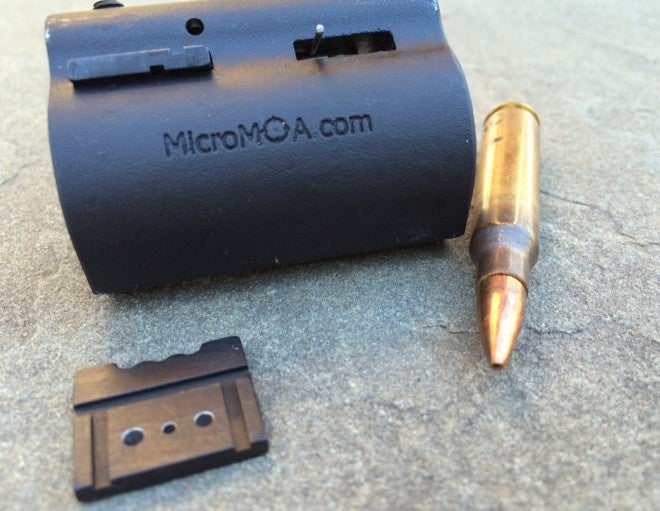
Notice the size difference between the suppressed gas port (middle) and the extreme gas port (left).
Without over simplifying the process, the action on a direct impingement (DI) AR-15 is powered by expanding gases traveling down the barrel, out the gas port, down the gas tube and ending at the gas key on the bolt carrier group (BCG). This blast of gas cycles the action.
Adding a suppressor to this system can increase “blow-back” which is just the process of adding more gas to the system. Because the suppressor is designed to trap and slow existing gasses to reduce noise and blast, these gasses can be redirected down the barrel and through the gas port rather than escaping from the muzzle like an unsuppressed rifle. Adding more gas to a DI AR system can have the side effects like those mentioned above.
Many shooters combat this problem of being “over gassed” by adding stiffer buffer springs and heavier buffers. And while these adjustments can be somewhat effective, it is analogous to treating the symptoms rather than curing the disease. Replacing springs and buffers won’t effect the extra dirt and grime pushed into the system and although they can cause the action to remain closed longer, extra gas still finds its way back towards the shooter.
Another complication comes from transitioning from suppressed to unsuppressed shooting. Whether you have a perfectly tuned custom gas port or have chosen to use a new buffer and spring combination, that setting is only setup for one type of shooting: either unsuppressed or suppressed. You are locked in to one setting.
That’s where adjustable gas blocks come into play. By adjusting your gas port size, you can switch between suppressed and unsuppressed shooting on the fly. This is a quick look at one of the best adjustable gas blocks currently available: the Govnah from MicroMOA.
Purchasing and Installation
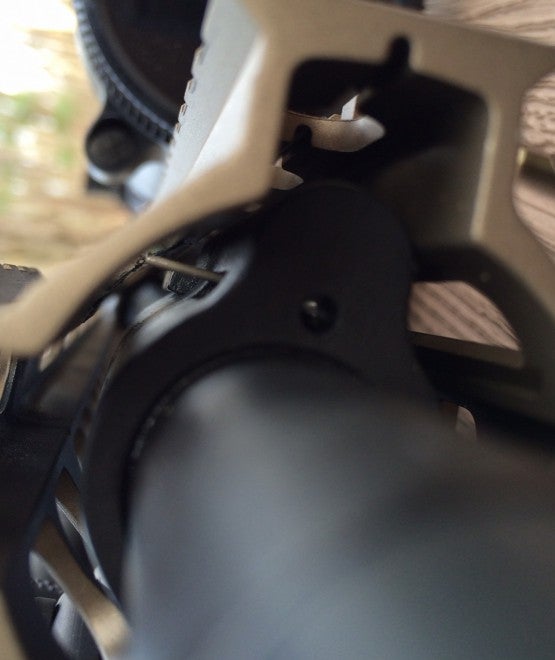
It’s a tight fit, but the regulator plate moves freely under the Geissele MK4 rail.
The Govnah utilizes a sliding plate system to adjust between different gas port sizes. One of your first considerations will be knowing the current gas port size in your barrel. Another variable is the length of your gas system: pistol, carbine or rifle. You’ll also want to decide if you want a two position or three position plate. All things being equal, my personal preference is a three position plate with the following port settings: unsuppressed – suppressed – extreme. More on the plate choices below.
One important planning note: because the sliding regulator plate needs a little extra space, if you are installing the Govnah under a rail you are going to want to check MicroMOA’s compatibility list here. If you are building a new rifle, you can opt to use one of MicroMOA’s purpose-built rail systems that partners with the Govnah perfectly. My gun(s) are outfitted with Geissele MK4 rails and the Govnah functions as designed.
Remember, the whole point of using an adjustable gas block like the Govnah is to give your rifle just enough gas to properly cycle the action and no more. This makes picking the port size on your regulator plate and especially important process. Fortunately, MIcroMOA has preset regulator plate options and top notch customer service if you aren’t sure what port sizes you need. Having said that, a three position plate is preferred, where one port is restricted to an optimal size for suppressed shooting, another port size is slightly less restricted for unsuppressed shooting and a port size that is the same size as the port in your barrel. The last setting, referred to as extreme, is especially useful if you run into dirty or under powered ammunition and your system needs that extra gas to cycle properly. Final suggestion here: use the middle position for suppressed shooting. If you run into an under gassed situation you can push the plate either way and get back in the game quickly.
Installation is simple and straightforward. If you are retrofitting an existing build, remove your muzzle device, rail system and current gas block. Otherwise, just slide on the Govnah and use the provided drill rod to line up the gas port in the barrel with the port positioning of the regulator plate. Tighten the hex screws on the underside of the Govnah clamping the gas block to the barrel, remove the drill rod and reinstall the gas tube. If I can do it, anyone can, however any competent gunsmith should be able to do the job in about fifteen minutes.
Shooting With The Govnah
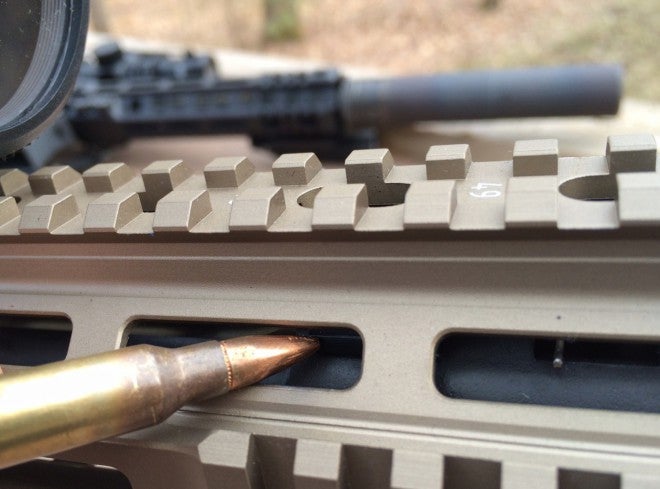
Let’s start with the rifle set to the extreme setting and the suppressor (SilencerCo Saker762) mounted to simulate an unregulated gas system. Remember the extreme setting matches the port size in the barrel. At this setting, the gas blow-back is noticeable, ejection port noise is loud and case ejection pattern is at about two o’clock. The ejection pattern of spent casings can be an indicator of an an over gassed rifle. Typically a healthy ejection pattern would throw cases between three and four o’clock (where the barrel is the 12 o’clock position).
Depending on your rail, switching between plate positions is easy. Just insert the nose of a bullet into the rail and onto the side of the plate and push. Again, having your middle position be your suppressed setting is optimal: if you run into an issue, either way you push, your gun is going to get more gas.
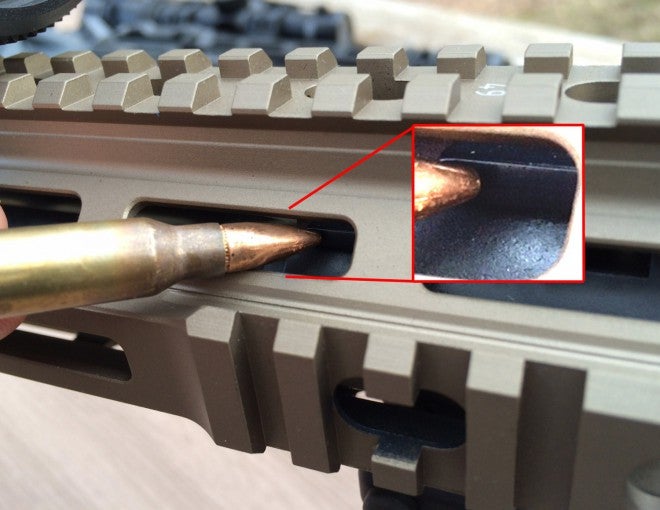
Pushing the plate between positions is simple with just the nose of a bullet.
With the Govnah set to the suppressed setting, there is a noticeable and dramatic reduction in gas and noise. My test rifle runs a Daniel Defense MK18 barrel which is notoriously over gassed with a .083 gas port size.
Writers note: this isn’t a knock on Daniel Defense or any other barrel manufacturer. Oversizing the gas port is a technique used to overcome the issue of customers running unreliable ammo and complaining that their rifles are malfunctioning.
I don’t notice a big difference in cleanliness in the action between the unsuppressed and suppressed settings, mostly because I like to run my guns wet, and eventually everything gets dirty. If you use a dry lube or just run a drier gun, my guess is you are going to have a longer interval between cleanings.
Important note: If you have adjusted your buffer spring or buffer weight, you are going to need to adjust your port size calculations or return to the stock configuration. The MicroMOA team can help you decide on the sizes of port holes with whatever barrel and gas system length you are running. In addition, for those operating at a higher level of gunsmithing skill, the Govnah can be ordered with a blank regulator plate so you can drill your own port sizes.
Final Thoughts
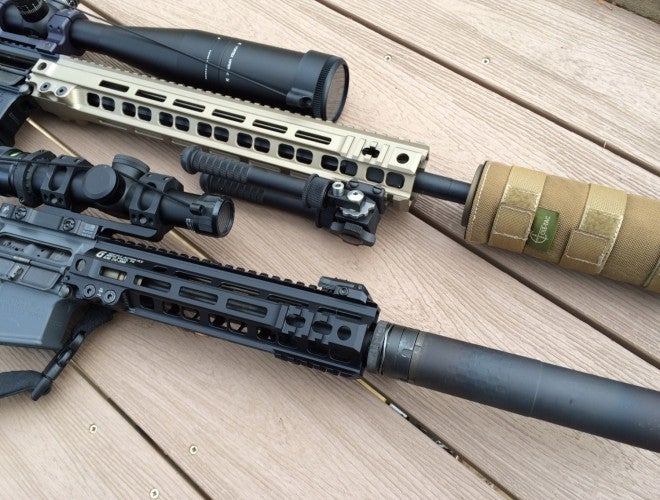
Govnahs on both a rifle length gas system and a carbine length gas system.
In my opinion, any 5.56 AR that will be suppressed should have an adjustable gas block. The Govnah is a great product; It is well thought out, has simple adjustments and is solidly constructed.
Downsides:
- If you have a pinned flash hider or brake you are out of luck. The Govnah needs to slip over the muzzle for installation. (In my opinion, a pinned muzzle device on a suppressed gun is less than optimal anyway).
- You need to know or find out the size of the gas port on your barrel. This isn’t a specification that manufacturers normally publish on their websites.
- The Govnah and the three position plates don’t fit inside all rail systems. MicroMOA has a compatibility list on their site here.
Upsides:
- On-the-fly, tool-less adjustments.
- Solid mechanism for switching gas settings.
- Match-Grade Barrel and complete upper combinations are available.
- Great customer service.
Specifications:
Govnah Adjustable Gas Block
MSRP: $152.00
Material: 416 Stainless (Gas block body) / 41xx (Regulator Plates)
Finish: BLACKNITRIDE (Gas block body and regulator plates)
Spring: 17-7 Stainless
Attachment: 3 Set Screws
Detent Pin: Plated/Hardened 4140
Barrel Diameter: Currently .750″ (.625″ coming later)
Weight: 4.1 oz
Length: 1.9”
Width: 1”
Height: 1.38”
100% Made in the USA
http://micromoa.com
Other gear pictured:
MSRP: $1,145.00
https://danieldefense.com/daniel-defense-m4-urg-mk18-10-3-barrel.html
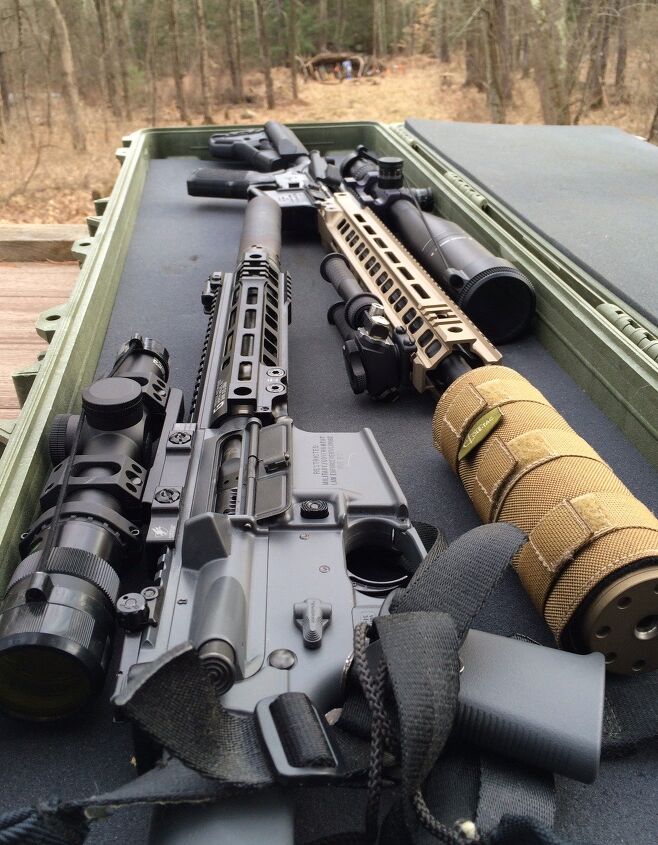
 Your Privacy Choices
Your Privacy Choices
